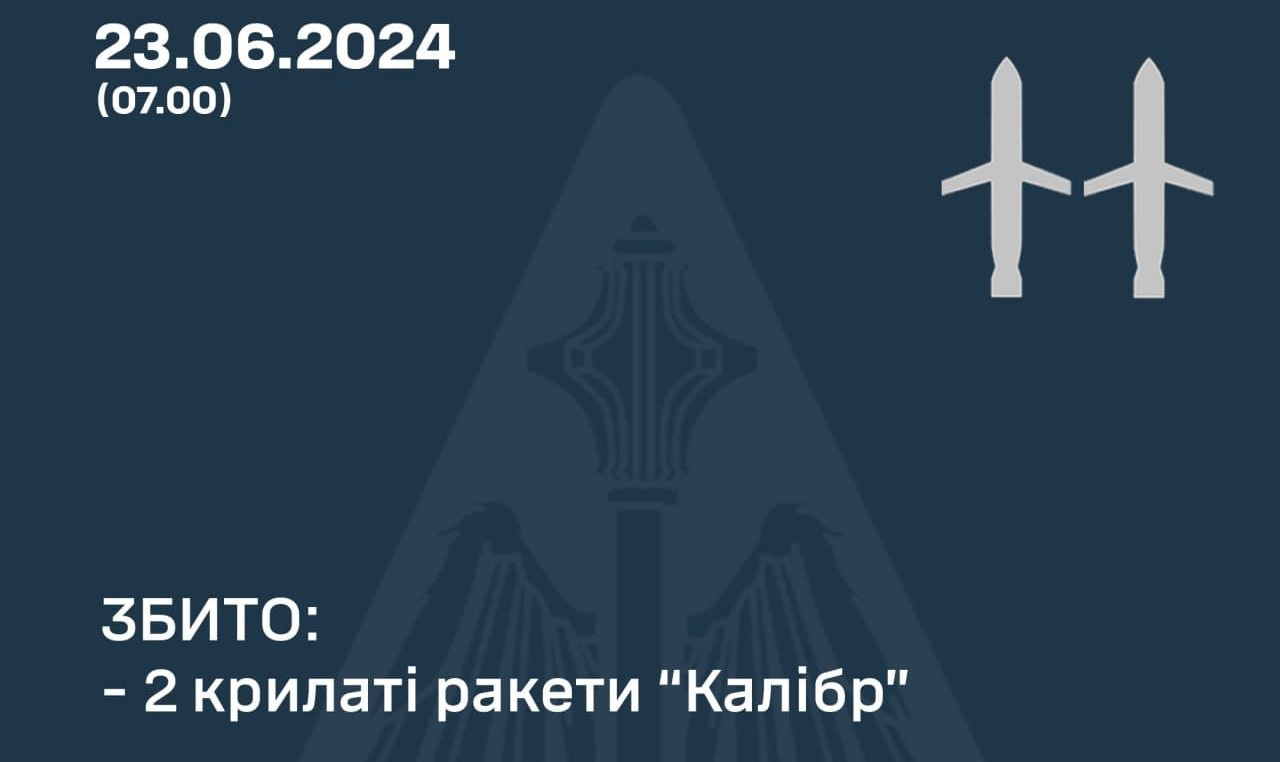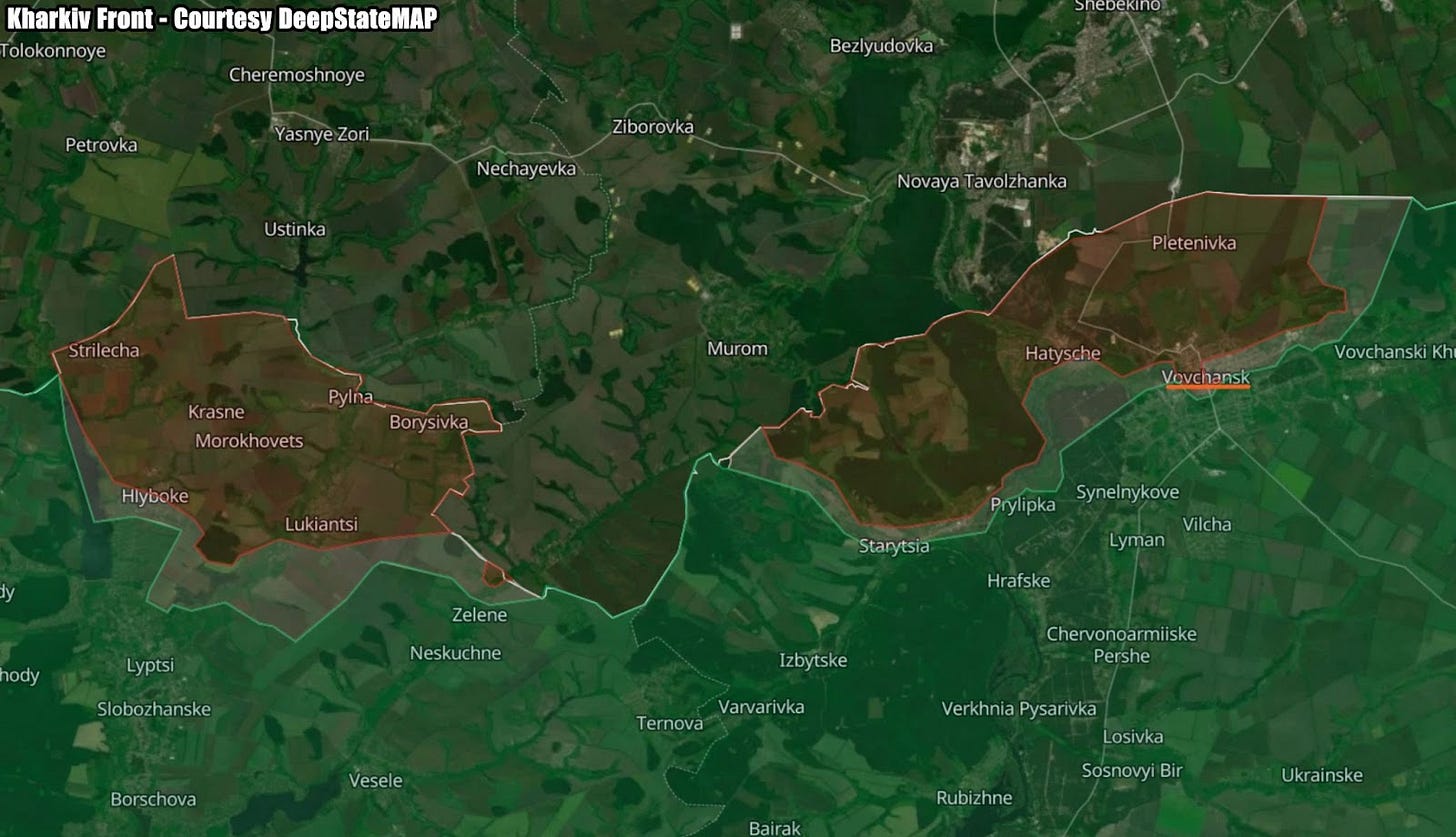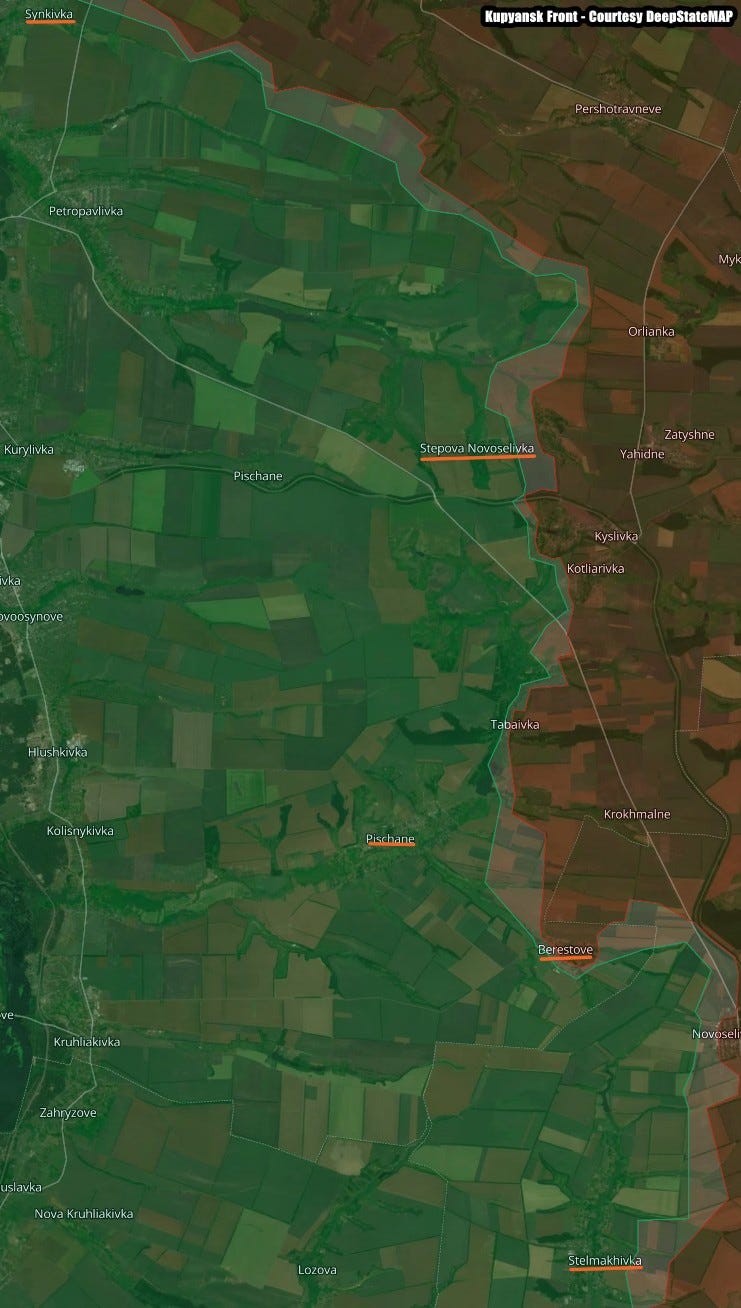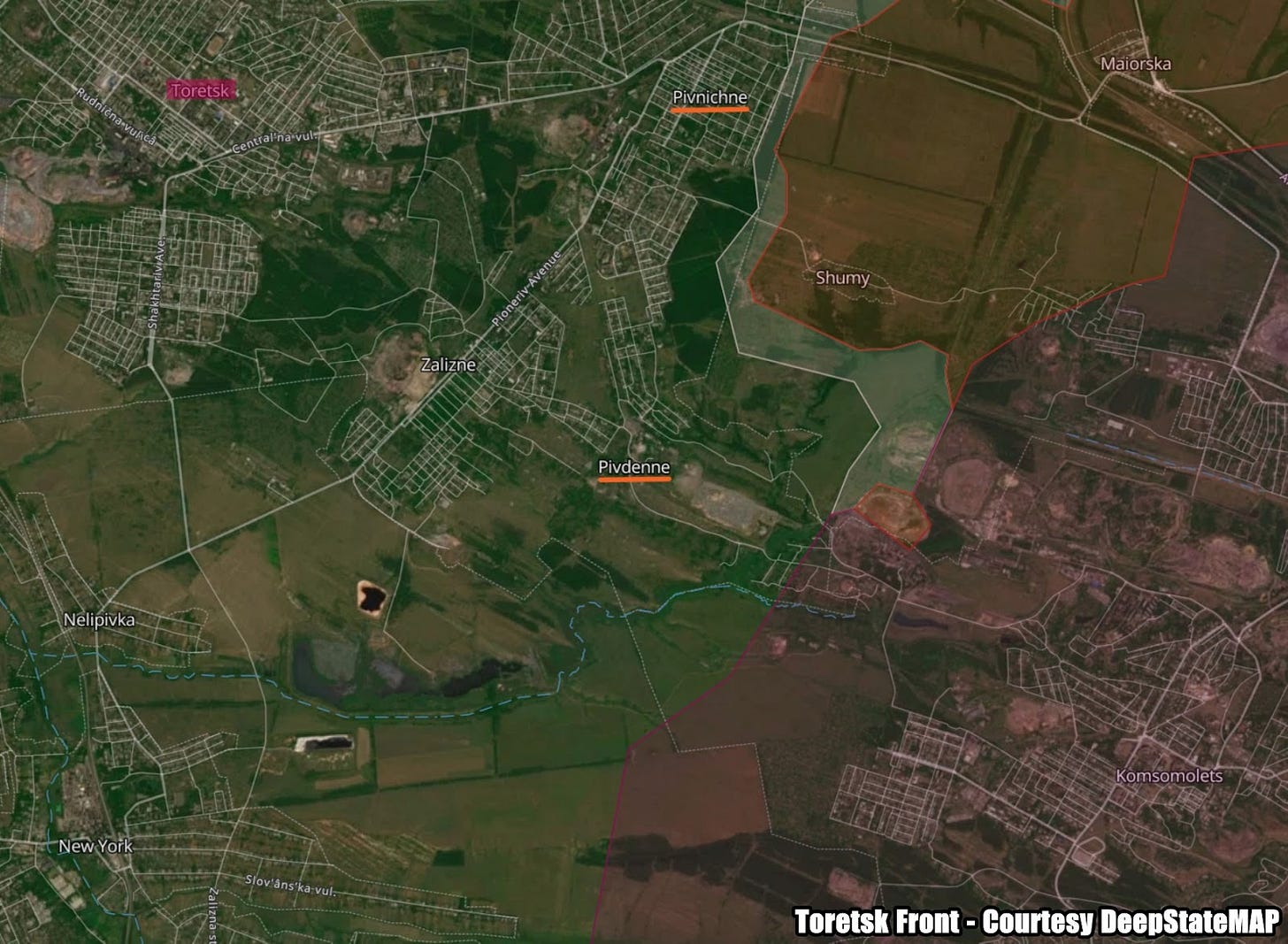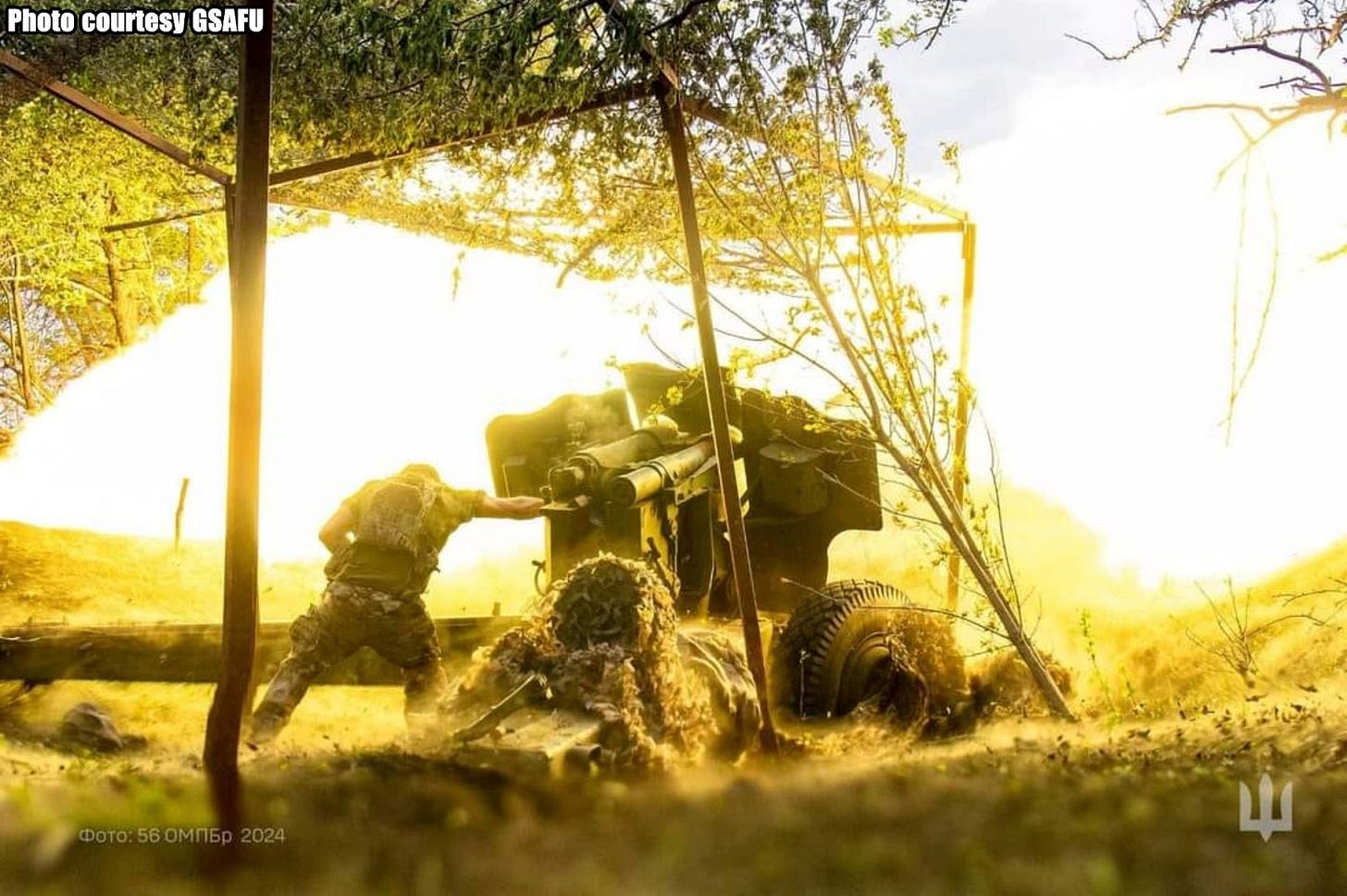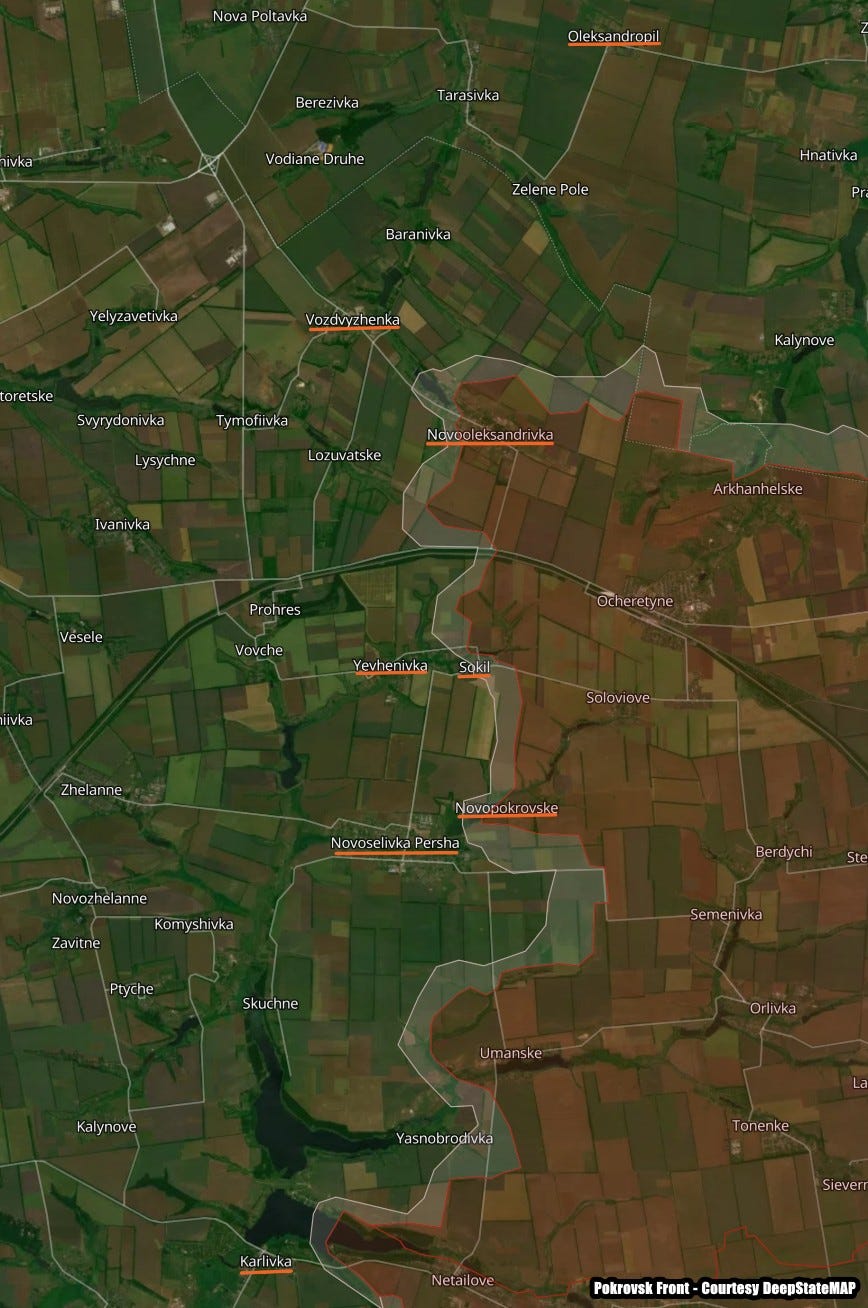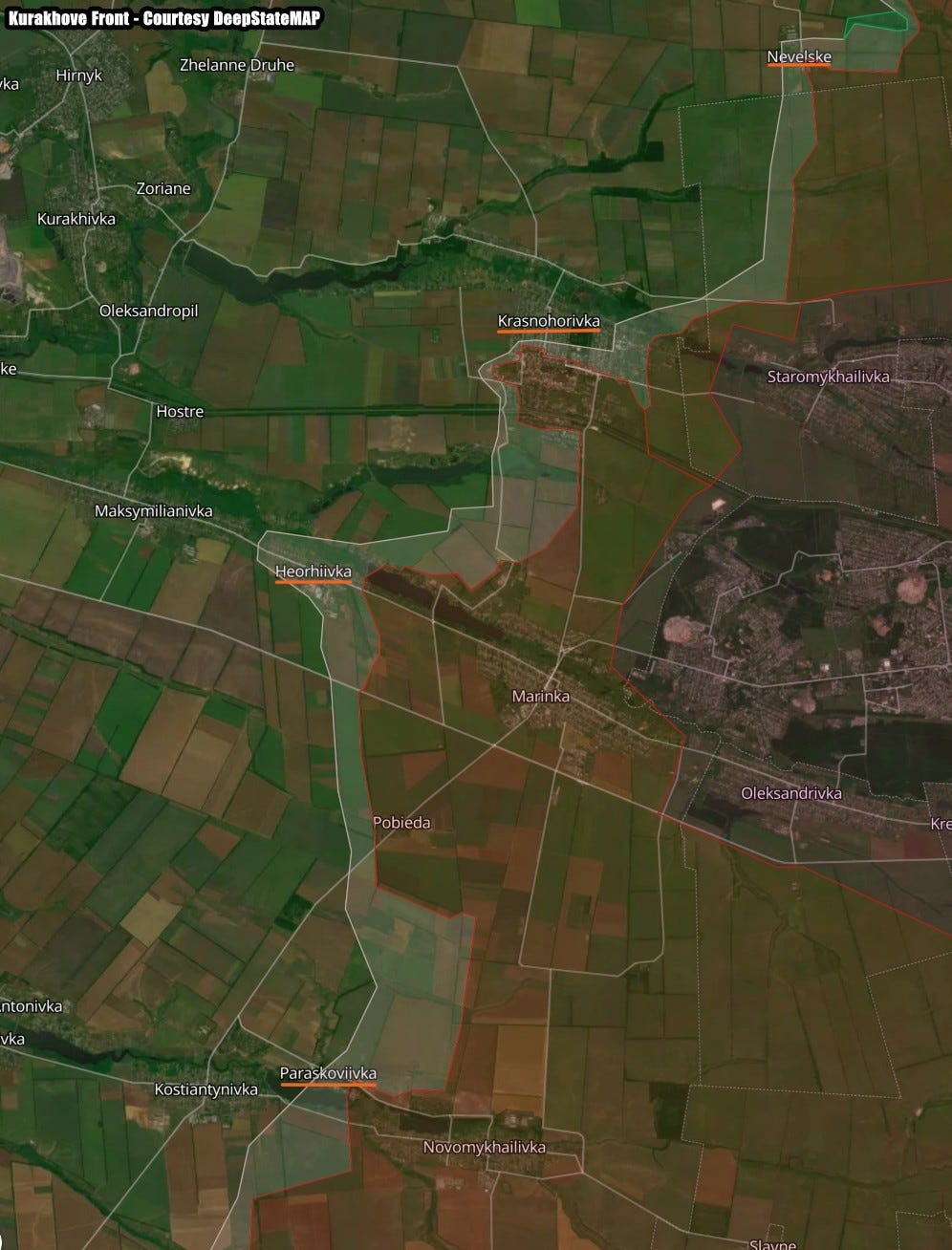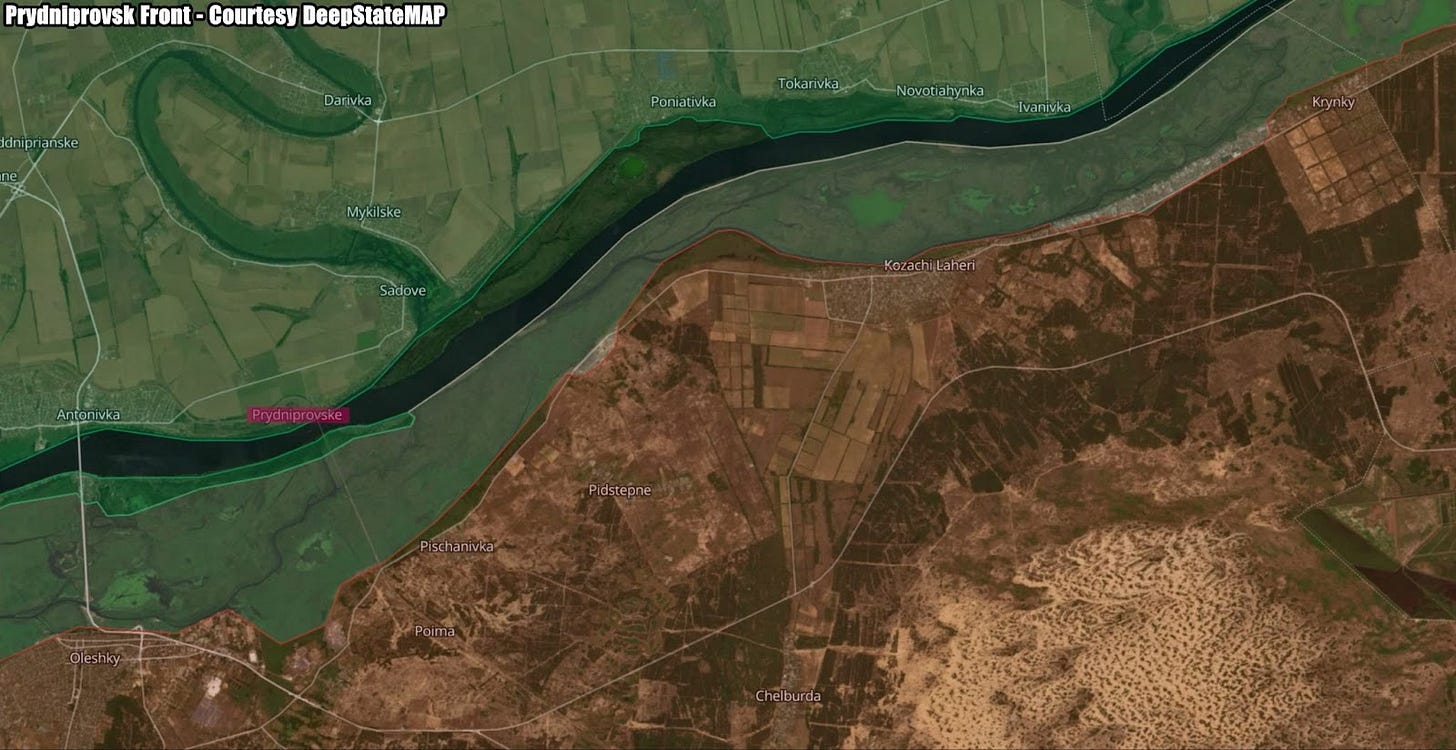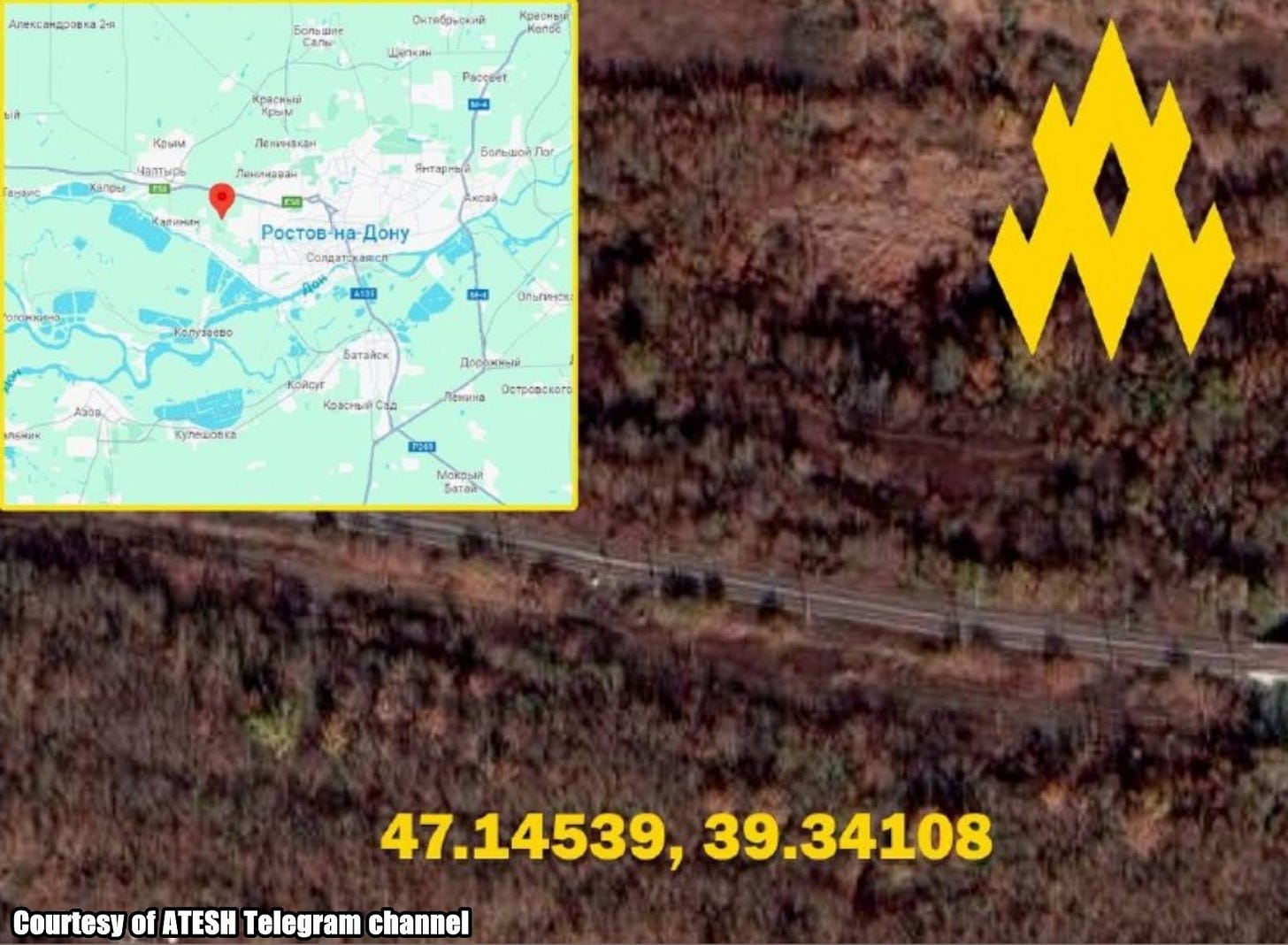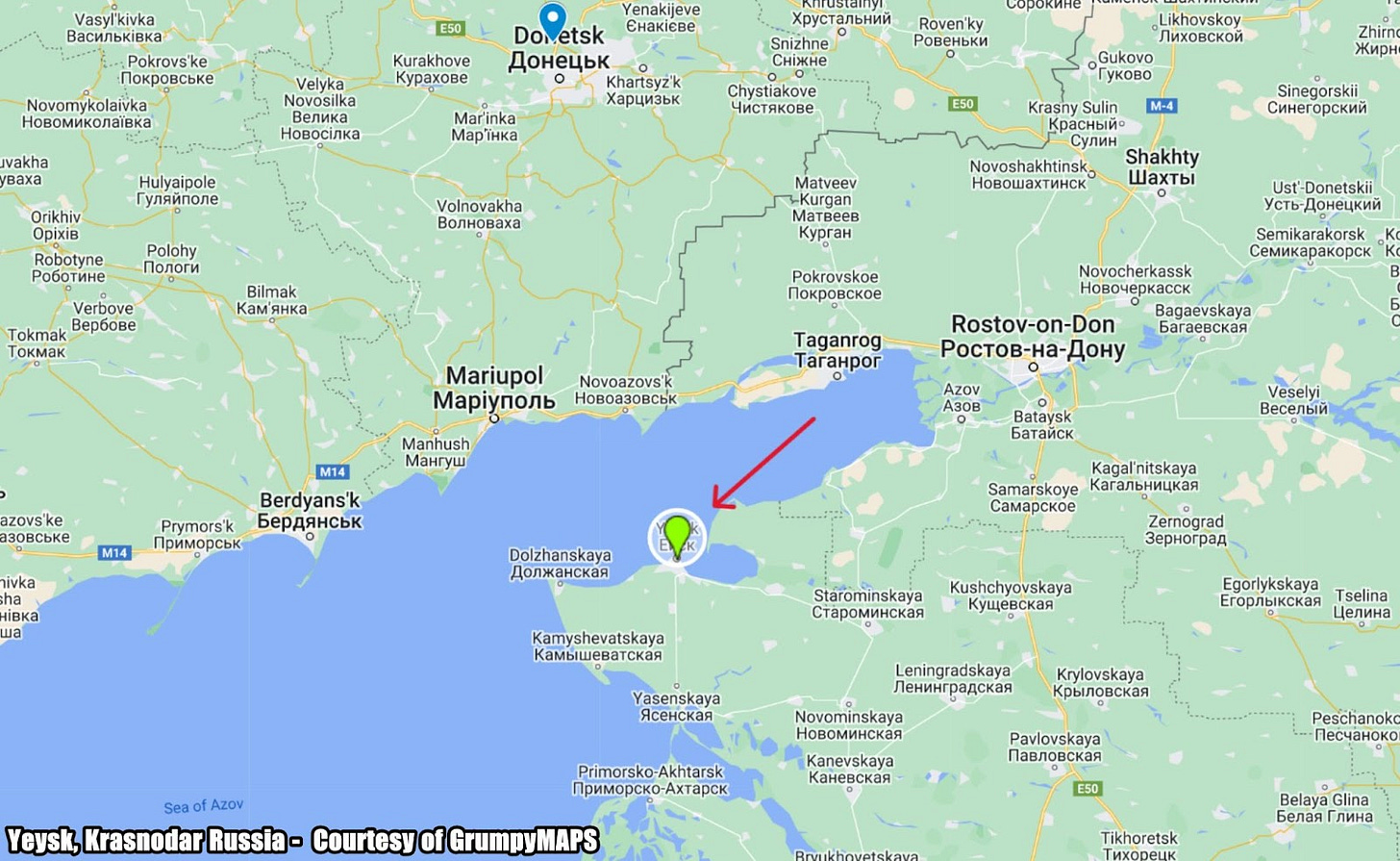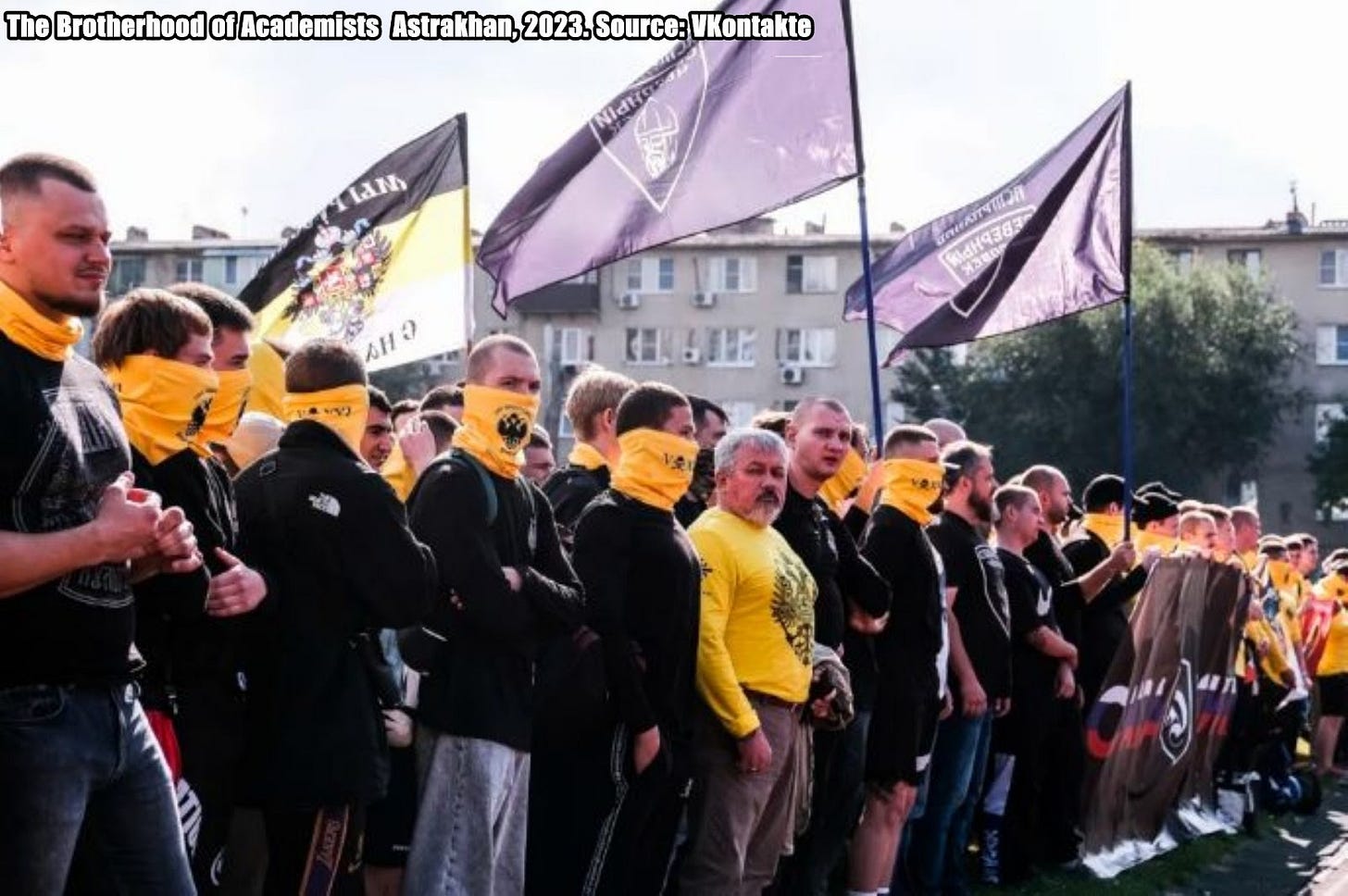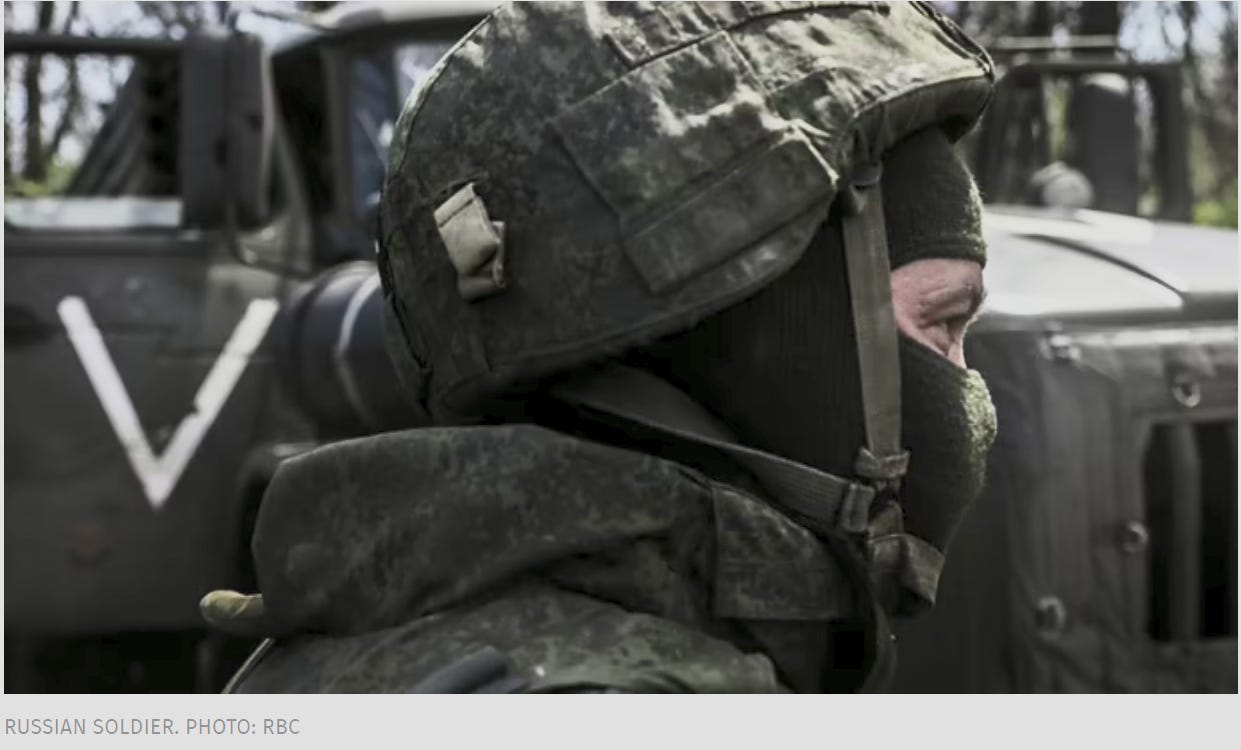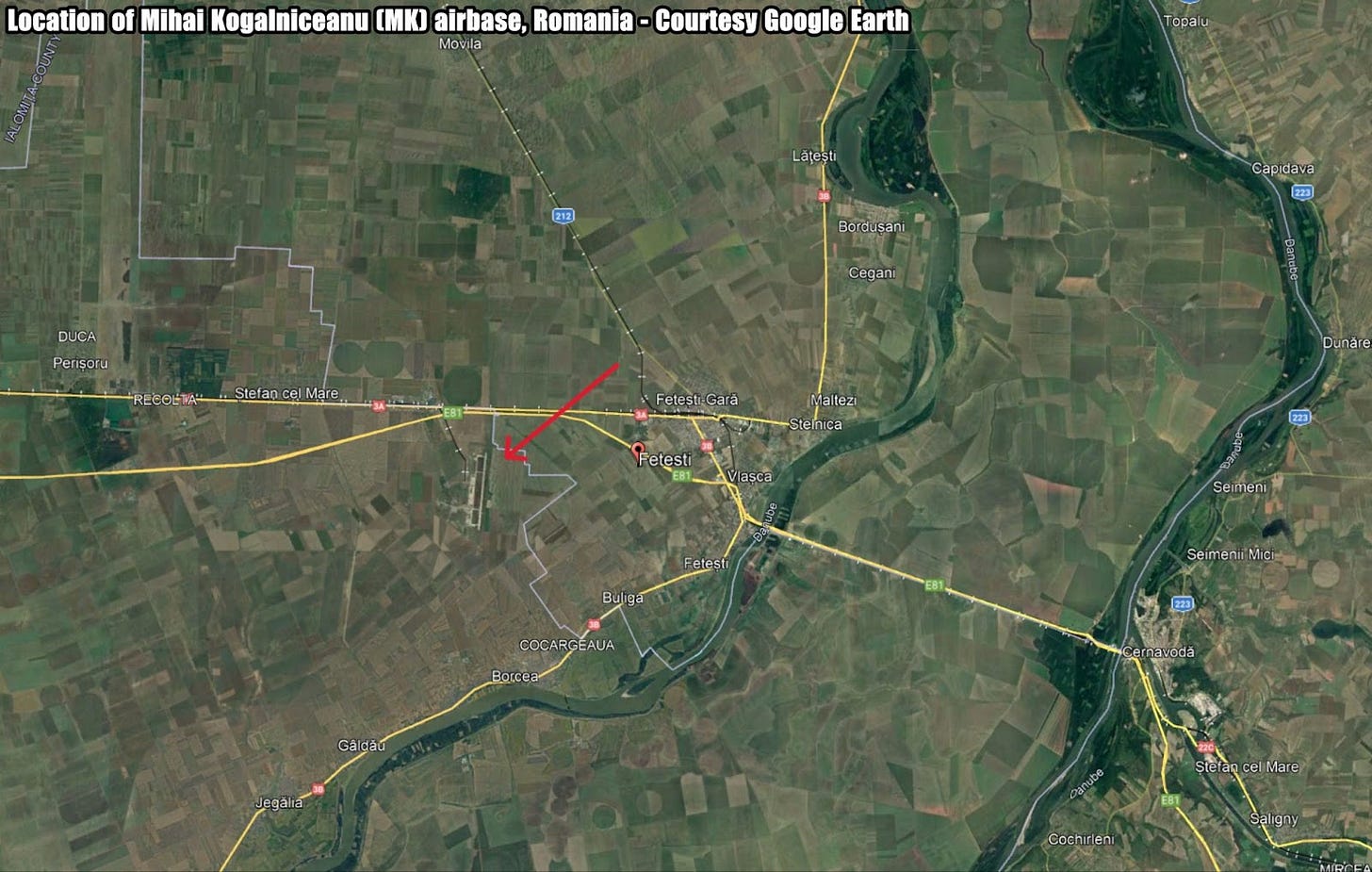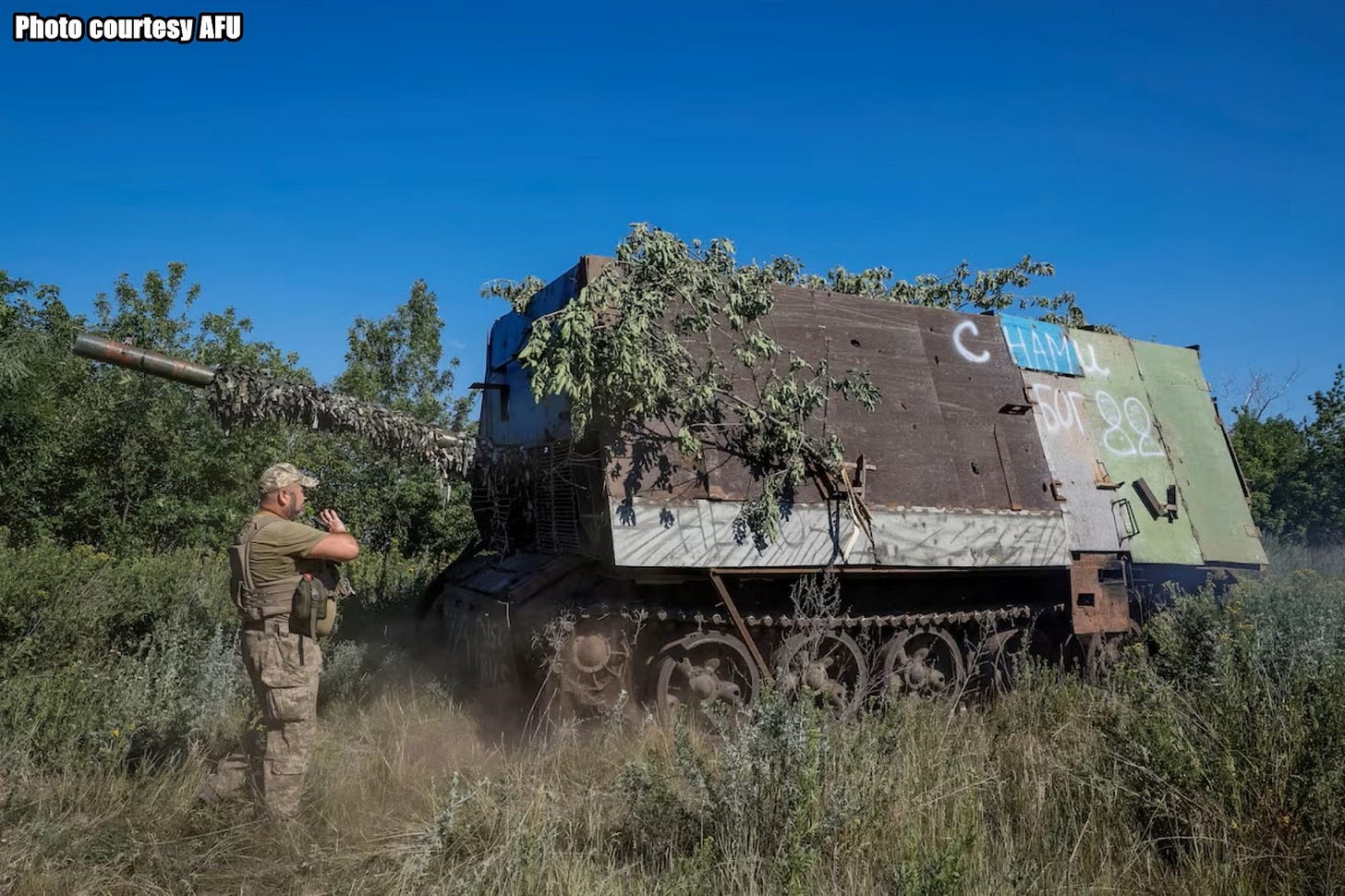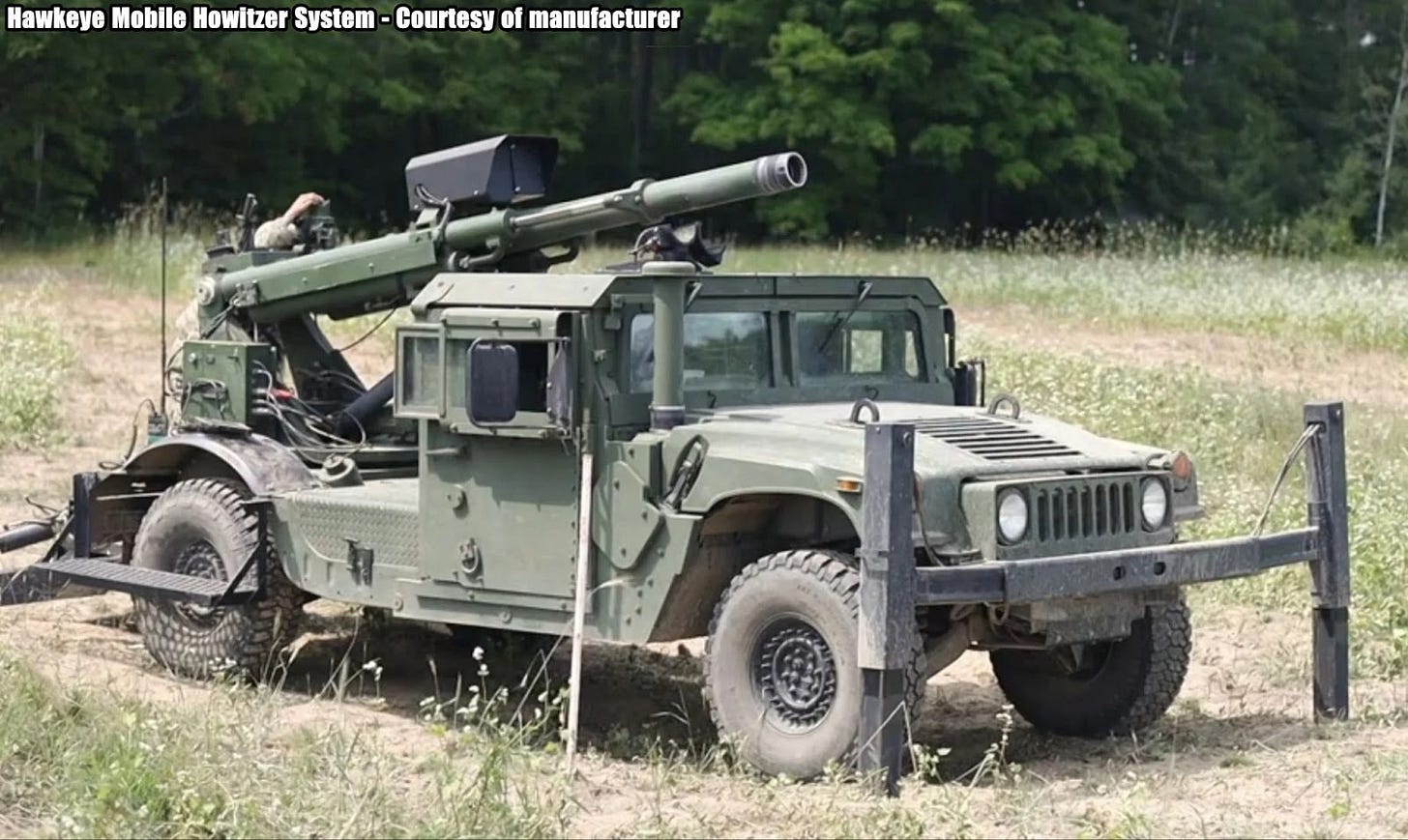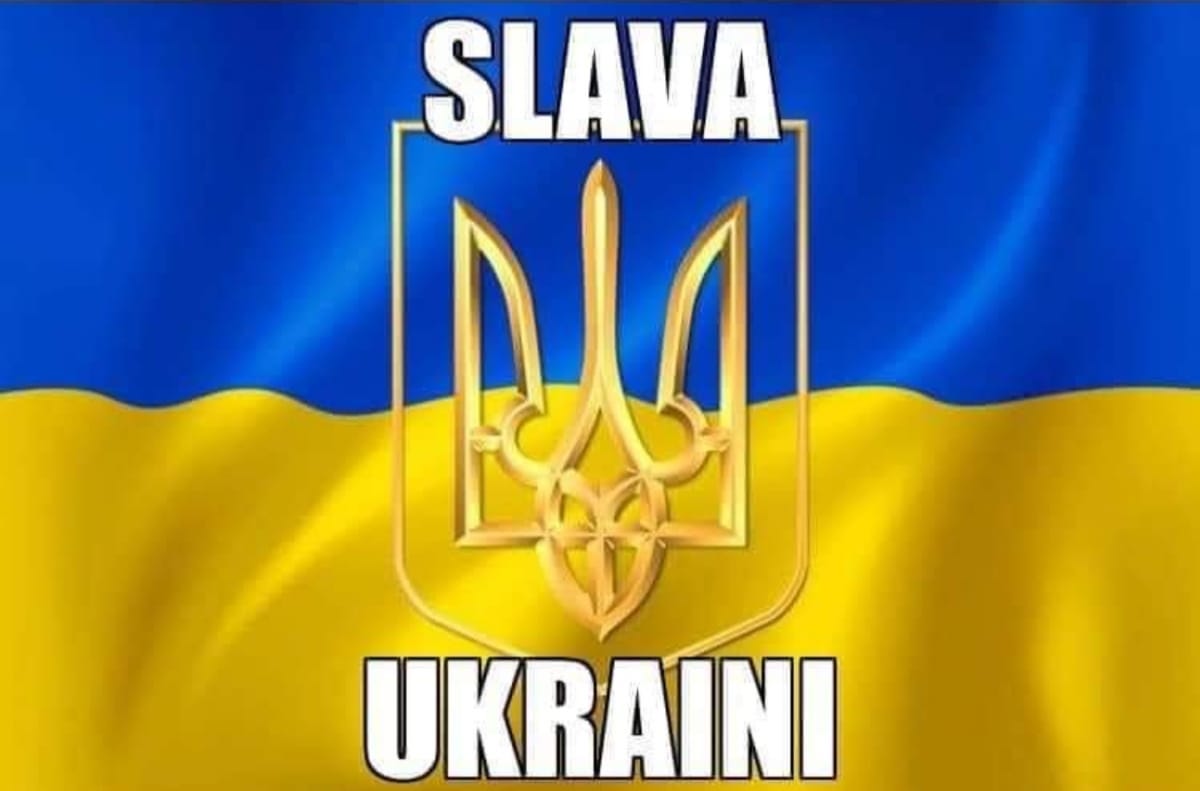Slava Ukraini! In early 2022 I began a Telegram channel aggregating news from a number of sources daily on the war in Ukraine. Since June 2023 I have provided a daily draft for the Ukraine War Brief Podcast collecting news from over 60 sources daily, much of which forms the basis of the script. While the Podcast is on hiatus I will make this Draft available here both on my own Substack and The People’s Media for those who wish to keep up with events on a daily basis.
ALONG THE CONTACT LINE
GSAFU Morning Report
The General Staff of the Armed Forces of Ukraine in its Operational Information update at 23:00 on June 22 stated that day 851 of the full-scale invasion of the Russian Federation against Ukraine was about to begin.
During the past day, 133 combat engagements took place. Over the past 24 hours, the enemy carried out 5 missile strikes, 35 air strikes, 544 drone strikes and more than 3,200 artillery strikes across the positions of Ukrainian forces.
At the same time, Ukrainian soldiers continue to inflict losses in manpower and equipment on the occupying troops, exhausting the enemy along the entire front line and continue to disrupt the plans of Russian occupiers to advance deep into the territory of Ukraine.
Ukrainian aviation, missile troops and artillery of the Defense Forces hit 17 personnel concentration areas, enemy control point, two PPOs, four ammunition warehouses, a REB station and one RLS.
Air Force Daily Report
On the night of June 23, 2024, the enemy attacked with three Kalibr sea-based cruise missiles from the Sea of Azov.
Two missiles were shot down by anti-aircraft missile units of the Air Force in the Kyiv region.
The Khortytsia operational-strategic group
(Responsible for the northeastern part of Ukraine. )
Kharkiv axis: The enemy, supported by aviation, twice unsuccessfully attacked in the area of Vovchansk and a third attack is ongoing.
Kupyansk axis: The enemy attacked Ukrainian positions 15 times in the vicinity of Synkivka, Stepova Novoselivka, Berestove, Pischane and Stelmakhivka. The situation is intense.
Lyman axis: The enemy attacked Ukrainian positions 8 times in the vicinity of Nevske, Novosadove and Terny. None were successful.
Siversk axis: The enemy carried out 10 attacks in the vicinity of Verkhnokamianske, Spine, Vyimka and Rozdolivka. The situation has not changed significantly. Ukrainian forces are taking actions to stabilize the area.
Kramatorsk axis: The enemy tried 4 times to push Defense Forces from occupied positions in the areas of settlements Hryhorivka, Chasiv Yar, Ivanivske and Klishchievka. The battle is ongoing near Klishchievka.
Toretsk axis: The enemy attacked Ukrainian positions 15 times in the vicinity of Pivnichne, Toretsk and Pivdenne All were repelled
ISW - Surge in Russian attacks in Donetsk Oblast signals potential summer offensive
American think tank The Institute for the Study of War (ISW) in its June 22 Russian Offensive Campaign Assessment stated that Russian forces appear to be intensifying the tempo of their offensive operations in Donetsk Oblast while decreasing the rate of attacks in northern Kharkiv Oblast — consistent with ISW's assessment that Russian offensive operations in Kharkiv Oblast are primarily intended to fix and distract Ukrainian forces in order to allow Russian forces to intensify elsewhere in theatre.
Russian forces increased the intensity of assaults in the Toretsk-Horlivka direction (southwest of Chasiv Yar and northeast of Avdiivka) on the night of June 18 and maintained a relatively high rate of attacks in this area between June 19 to June 22, reportedly making several tactical gains in the area.
Russian forces have been generally inactive on this sector of the front throughout the course of 2024, so their activation and intensification are noteworthy. By contrast, the tempo of Russian offensive operations in northern Kharkiv Oblast has drastically decreased in recent days, particularly in comparison with the start of Russian offensive operations north and northeast of Kharkiv City in mid-May 2024.
ISW has long assessed that the Russian command intended its offensive operation in Kharkiv Oblast to fix Ukrainian manpower and scarce materiel along the northern border to grant Russian forces opportunities to re-intensify offensive operations in other more critical areas of the theatre, particularly in Donetsk Oblast. Ukrainian sources have confirmed that some Ukrainian forces have redeployed units to the Kharkiv direction from Donetsk Oblast, so Russian forces may be exploiting this perceived weakness of Ukrainian lines to intensify attacks, particularly in the Toretsk-Horlivka direction.
Russian forces have additionally maintained a high rate of attacks in the Chasiv Yar direction and around Avdiivka since decreasing the tempo in Kharkiv Oblast, and may soon intensify attacks in this area if the Russian command identifies the coming weeks as an advantageous time to push in these areas before Ukrainian forces re-allocate reserves back to Donetsk Oblast. Ukrainian sources have warned that Russia will conduct a summer offensive that will likely focus on Ukraine's east after pursuing offensive operations in the north intended to stretch Ukraine's scarce resources, and recent intensifications in Donetsk Oblast may indicate preparations for such a summer offensive, assuming it has not already begun.
The Tavria operational-strategic group
(Responsible for the central-eastern and southeastern part of Ukraine.)
Pokrovsk axis: This continues to be the most severe area of attack.The enemy conducted 44 attacks against Ukrainian defences in this area over the last day in the vicinity of Oleksandropil, Vozdvizhenko, Novooleksandrívka, Sokil, Yevhenívka, Novopokrovske, Novoselívka Persha and Karlivka
Kurakhove axis: There have been 15 enemy assaults on this front in the vicinity of Nevelske Krasnohorivka, Heorhiivka, and Paraskoviivka. All attacks were repelled
Vremika axis: The situation has not experienced significant changes.
Orikhiv axis: The situation has not experienced significant changes.
The Odesa operational-strategic group
(Responsible for Kherson, Qırım, (also known as Crimea) and the Black Sea.)
Prydniprovsk axis: The enemy made 6 attempts to breach the defences of Ukrainian forces on the left bank of the Dnipro.
TEMPORARILY OCCUPIED TERRITORIES
Resistance sabotages railway section to occupied Mariupol in Russia's Rostov-on-Don
ATESH underground resistance movement reported they have carried out a sabotage in the Russian city of Rostov-on-Don – an unknown person set fire to a relay cabinet on the Rostov-on-Don-Mariupol railway section.
"Sabotage of this kind does not let the invaders relax, reminding them that they must be held accountable for their actions even on the territory of the Russian Federation."
The resistance says this railway line plays a key role in moving military forces and equipment between different parts of Russia's Southern Military District and provides access to the sea route.
THE HOME FRONT
More than 100 houses, hospital and pharmacies damaged in Vasylkiv by russian attack
More than 100 private houses and 6 high-rise buildings were damaged in Vasylkiv, Kyiv Region, which suffered a russian attack. Ukranews reports.
The mayor of the city Nataliia Balasynovych informed about this to the Espresso TV channel.
"The consequences are serious, we have more than 100 private houses, 6 high-rise buildings, a children's hospital, a polyclinic building, a maternity ward, and a surgical building damaged. Administrative premises, pharmacies were damaged," she said.
The number of damaged buildings is not yet final, as reports from local residents are still coming in.
She noted that this is a significant damage to the community, and the most important thing is that there were no casualties as a result of the attack.
As the Ukrainian News agency earlier reported, on the night of June 23, the russian occupation forces attacked Ukraine with Kalibr sea-based cruise missiles. In total, the invaders fired three missiles.
Two residents of the Kyiv Region were injured as a result of falling missile fragments. The press service of the State Emergency Service published photos taken at the place where the debris fell.
RUSSIAN WORLD
Ukraine strikes command post in Russian territory
Ukrainian forces strike into Russian territory, destroying a motorised rifle regiment’s command post in Belgorod Oblast, the General Staff of the Ukrainian Armed Forces [GSAFU] reports.
“The Ukrainian Air Force, in cooperation with other Defense Forces components, successfully struck an enemy motorised rifle regiment’s command post located in Nekhoteevka, Belgorod Oblast, Russia. The target was effectively neutralised,” the statement on Facebook reads.
Explosions were observed following the combat operation, confirming the strike’s success.
This operation comes in the wake of a May 2024 decision by Western allies to permit Ukraine to use supplied weapons for strikes on Russian soil, albeit limited to a 100-kilometre range. The impact has been notable, with border regions like Kharkiv experiencing fewer Russian attacks. However, Kyiv seeks expanded authorization for deeper strikes.
The Ukrainian Navy Officially Confirmed the Strike on russian 726th Air Defense Training Center in Krasnodar Region
The Ukrainian Navy officially released information regarding a strike conducted on the night of June 21 targeting the 726th Air Defense Training Center of the russian Air Defense Forces near the city of Yeysk in Krasnodar region, situated along the coast of the Sea of Azov. Defense Express reports.
This military base has been a consistent launch site for the Shahed drones and a hub for crew training operations. Satellite imagery, made public by OSINT analyst Brady Africk, vividly displayed the aftermath of the strike: images captured the day following the attack, conducted in coordination with the Security Service of Ukraine, revealed extensive destruction to a building, likely caused by a powerful detonation, possibly originating from the Shahed drones themselves, along with damage to another structure. The Ukrainian Navy’s report also noted the elimination of qualified instructors responsible for training personnel in Shahed-136 / Geran-2 launches, as well as cadets trained to deploy Iranian UAVs for strikes within Ukrainian territory.
While the weapon of the strike remains undisclosed, the Ministry of Defense of russia reported on the same day about the “successful interception” of 70 UAVs over occupied Crimea and the Black Sea, along with 43 drones over Krasnodar region.
Of particular note in this event is the successful drone strike on the russian Air Defense Forces’ training centre, situated near the Yeysk airbase. This facility not only serves as a training site but also houses russian Su-34 bombers. One would logically expect this facility to be fortified with air defence systems due to its strategic importance as an air defence position.
Russia Pushes Young Generation for Militant Expansionism
The UK Ministry of Defence in its June 22 Intelligence Update reported about the The rise of the Fraternity underscores complex generational dynamics at play within russian society.
Konstantin Malofeyev, the owner of the Russian nationalist TV channel Tsargrad is the sponsor of a nationalist student movement ‘The Fraternity of the Academics’. This organisation has cells in various Russian universities and adheres to a militantly imperialist outlook. The Fraternity believes that the 21st century could become a golden century of Russian culture with Russian ideological dominance on a global scale.
The Fraternity has organised military training and some members of the Fraternity have gone to fight in Ukraine (the movement is totally hostile to Ukrainian statehood).
The existence of this movement makes clear that there is a constituency in Russia for a more militant approach towards both the war on Ukraine and the West. This will likely have an impact on the generational turnover that is likely to take place in the Russian administrative elites over the rest of this decade.
The level of crimes committed by military personnel is growing in russia
Russia has sent so many men to join its war in Ukraine that crime levels in the country fell soon after the invasion began. Now their return is starting to unleash a wave of offending. Bloomberg reports.
Crimes committed by servicemen that aren’t linked to the war increased by more than 20% last year, according to data from Russia’s Supreme Court. While the overall numbers are still small and many returning servicemembers don’t go onto commit offences, there was a jump in cases of violent crimes as well as thefts and drug-related transgressions.
The figures exclude crimes involving tens of thousands of convicts released from jail to join the war under a program set up by the late Wagner mercenary group leader Yevgeny Prigozhin. Those who survived six months at the front were able to gain a pardon from President Vladimir Putin and return to Russia as free men.
In prison, “they are treated like ‘we are nothing,’ then it all gets even worse at the front,” said Kazan-based sociologist Iskender Yasaveev. “The experience they return with is a trauma that will manifest itself for decades.”
Sociologists have long noted that crime levels often surge following the end of military conflicts, and researchers have looked at many possible causes for this from social disruption to trauma faced by soldiers. Russia is unlikely to buck that trend after Putin ordered the February 2022 invasion that triggered Europe’s largest conflict since World War II. The return of prisoners who fought for Wagner is offering an early signal of what may lie in store once hundreds of thousands of men brutalised by the fighting return to civilian life.
While lower-level crimes fell, the number of murders and sex offences, particularly against children, hasn’t declined in the past two years. Indecent assault against minors surged by 62% compared to the prewar period, according to Bloomberg calculations based on Supreme Court data.
NEWS WORLDWIDE
Romanian village poised to become NATO's largest airbase in Europe
Romania's Mihai Kogalniceanu (MK) airbase, named after a nearby village honouring a 19th-century liberal politician, is set to become NATO's largest base in Europe, surpassing Ramstein in Germany. The Kyiv Independent reports.
This move comes as a response to Russian leader Vladimir Putin's justification for the war in Ukraine, citing NATO's encroachment on Russia’s European flank. NATO's increased presence in Romania is a direct response to the full-scale war, now in its third year.
The MK base will soon host a squadron of Romanian F-16s, recently acquired from Norway, as well as MQ-9 Reaper drones. Additionally, a military city is being developed to accommodate rotating NATO army, air force, and naval personnel from 32 countries, according to BBC.
BBC interviewed RAF pilot Flight Lieutenant Charlie Tagg who is on his third and final tour of duty at the MK base. "There's a much bigger US presence here, a lot more infrastructure, accommodation, people, and equipment," he noted.
According to Tagg, Russia’s invasion of Ukraine has altered both the areas he flies over and the strategic posture of the mission. During his last tour in 2021, NATO fighter pilots flew far out over international waters in the Black Sea. However, now they stick to the 12-nautical-mile zone above Romanian and Bulgarian territorial waters "to avoid misunderstandings, escalatory situations with the Russians."
UK's Nigel Farage doubles down on controversial Ukraine/Putin comments
British politician Nigel Farage has doubled down on his controversial claim that Russia was provoked into launching the full-scale invasion of Ukraine by the expansion of NATO and the EU. The Kyiv Independent wrote.
In an article for The Telegraph on June 22, titled "The West’s errors in Ukraine have been catastrophic. I won’t apologise for telling the truth," Farage denied he was "an apologist or supporter of Putin."
The politician, who heads a newly-resurgent Reform UK party, drew widespread criticism on June 20 when he said the EU and NATO "provoked" Russia’s invasion of Ukraine by expanding eastwards.
"I am not and never have been an apologist or supporter of Putin," he wrote in the June 22 article. "His invasion of Ukraine was immoral, outrageous and indefensible. As a champion of national sovereignty, I believe that Putin was entirely wrong to invade the sovereign nation of Ukraine.
The politician, who heads a newly-resurgent Reform UK party, drew widespread criticism on June 20 when he said the EU and NATO "provoked" Russia’s invasion of Ukraine by expanding eastwards.
"I am not and never have been an apologist or supporter of Putin," he wrote in the June 22 article. "His invasion of Ukraine was immoral, outrageous and indefensible. As a champion of national sovereignty, I believe that Putin was entirely wrong to invade the sovereign nation of Ukraine.
"Nobody can fairly accuse me of being an appeaser. I have never sought to justify Putin’s invasion in any way and I’m not now."
Farage then insisted he saw the war coming "a decade ago," saying the West has "played into Putin’s hands, giving him the excuse to do what he wanted to do anyway."
Farage's comments echo Kremlin disinformation lines used to justify the full-scale invasion of Ukraine, namely that Russia was forced to start the war to protect itself from the threat from NATO.
The stance ignores the fact NATO is a defensive alliance and one of the main motivating factors for countries in Eastern Europe – including Ukraine – to join, is an understanding of the Kremlin's imperialist ambitions rooted in a long and bloody history of falling victim to it.
MILITARY & TECH
Ukraine captures Russian 'barn' tank modified against drone threat
Ukraine captured intact a Russian “barn tank” bizarre-looking Russian battlefield vehicle that shows how troops are trying to adapt to the constant threat of drone attacks. Reuters reported.
The vehicle, built from a ramshackle, rusted T-62 tank, was modified to have a boxy metal shell as its exterior, a cage at its rear and electronic warfare devices attached to it, soldiers told Reuters after it was captured this week.
They say it was used to shuttle around food, ammunition and troops. Its canopy appeared aimed at protecting against drone attacks, particularly cheaply produced FPV (First-Person-View) drones, which are strapped with a munition and flown to their target by a pilot watching on a screen.
"It was created to defend from FPV drones and (drone bomb) drops. It's an empty taxi for personnel with electronic warfare as its only defence," Serhiy Misiura, a lieutenant colonel, said on an official Ukrainian army television station.
Nearly 28 months since Russia launched its full-scale invasion, the use of drones by both sides has become ubiquitous on the battlefield, making it difficult to advance or operate safely.
"They clearly didn't work hard on it. They hastily put it on and sent the tank to the frontline," said Dmytro, a Ukrainian soldier who spoke to Reuters about the vehicle in the Donetsk region.
They said the vehicle was captured near Klishchiivka, a village gripped by fighting for months on end near the Russian-occupied city of Bakhmut.
Dmytro said getting in and out carrying equipment was difficult through its tiny hatch. Visibility was very limited and the stench inside was overwhelming.
Aerial drone footage shot by the Ukrainian military and published on June 17 showed the tank being captured in a wooded area along with a Russian crew. Kyiv's forces then planted a Ukrainian flag on top of it.
Ukraine receives advanced light howitzer from AM General
In a surprise announcement at the Fires Symposium, Program Director Mike Evans revealed that AM General has provided a test article of their 105 mm Hawkeye Mobile Howitzer System to Ukraine in April 2024. Defence Blog reports.
The Hawkeye is currently undergoing operational testing and evaluation in Ukrainian service.
“We recently put a 105 mm system into Ukraine. We shipped it in April and trained for two weeks,” Evans stated. “That system is destined to be one of the first soft recoil systems in combat. It’s going into combat to test on live targets.”
The Hawkeye Mobile Howitzer is known for its high mobility and versatility. It can be transported by various means, including transport aircraft, helicopters, and can even be air-dropped. The platform’s stability is ensured by four hydraulic stabilisers, allowing for horizontal aiming of 180 degrees and vertical aiming from -5 to +72 degrees. The system is designed for a crew of four, but can be operated by just two if necessary.
The Hawkeye’s firing range with standard ammunition is 11.6 kilometres, and it can reach up to 19.5 kilometres with rocket-assisted projectiles. The maximum firing rate is eight rounds per minute for three minutes, with a sustained rate of three rounds per minute. The howitzer can use the full range of 105 mm ammunition utilised by the U.S. Army.
The fire control system includes an M137A2 optical telescope sight and a digital system MG 9000. This digital system comprises an LN-270 inertial navigation system from Northrop Grumman, a DFS-02 direct fire sight camera from Sekai Electronics, Inc, an S67-1575-76 GPS antenna from Sensor Systems Inc, a Weibul Scientific muzzle velocity radar, and a Mandus display unit for the gunner.
That’s it for today’s Draft folks if you would like to keep up with events in Ukraine daily please consider subscribing, its free!
Feel free to share this update with your friends. Heroyam Slava!








